P-63 Kingcobra
Models
Premier modèle de production et également le modèle le plus produit. La production d'un total de 1725 avions, fut subdivisée en plusieurs sous-models:
- P-63A-1 Kingcobra: modèle similaire au XP-63A mais doté d'un blindage de 39.8 kg et une capacité interne en carburant de 378 L. 50 exemplaires construits.
- P-63A-5 Kingcobra: modèle munis d'un blindage de 81 kg, et un point d'attache pour transporter soit une bombe ou un réservoir largable. 20 exemplaires construits.
- P-63A-6 Kingcobra: modèle munis de deux autres points d'attache pour tranporter des bombes. 130 exemplaires construits.
- P-63A-7 Kingcobra: modèle pouvant accueillir des réservoir largables sous les ailes. 150 exemplaires construits.
- P-63A-8 Kingcobra: modèle munis d'un blindage de 85 kg, et d'une hélice Aeroproducts plus petite. 200 exemplaires construits.
- P-63A-9 Kingcobra: modèle munis d'un blindage de 90 kg, et d'un nouveau canon de 37 mm M10 (58 coups). 450 exemplaires construits.
- P-63A-10 Kingcobra: modèle munis d'un blindage de 107kg, et pouvant accueillir des roquettes sous les ailes. exemplaires construits.
First production model and also the most produced
model. Production of a total of 1725 aircraft, was divided into several
sub-models:
- P-63A-1 Kingcobra: model similar to XP-63A but with a shielding 39.8 kg and an internal fuel capacity 378 L. 50 aircraft built.
- P-63A-5 Kingcobra: Model shielded 81 kg and an attachment point to carry either a bomb or a drop tank. 20 aircraft built.
- P-63A-6 Kingcobra: model equipped with two attachment points for tranporter bombs. 130 aircraft built.
- P-63A-7 Kingcobra: model can accommodate droppable tank under the wings. Built 150 copies.
- P-63A-8 Kingcobra: template shielded 85 kg, and a smaller propeller Aeroproducts. 200 aircraft built.
- P-63A-9 Kingcobra: Model shielded 90kg, and a new 37 mm gun M10 (58 rounds). 450 aircraft built.
- P-63A-10 Kingcobra: Model shielded from 107kg, accommodating rockets under the wings. built copies.
La majorité des P-63A sera livrée à l'Union Soviétique. The majority of P-63A will be delivered to the Soviet Union.
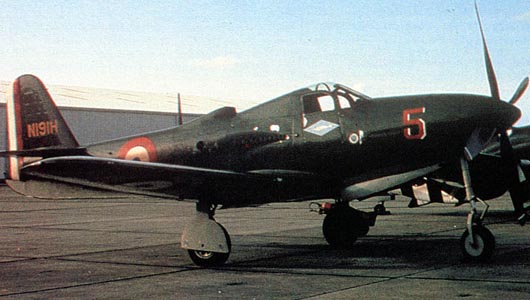 |
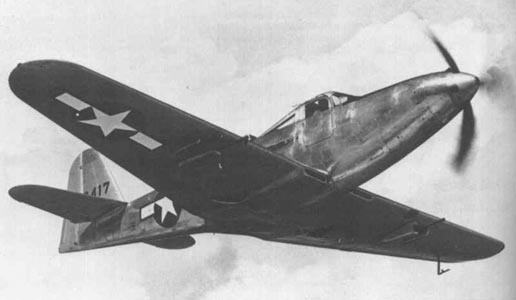 |
P-63A Kingcobra |
|
src: WWII
Vehicles |
|
Data |
Drawings |
Modèle devant accueillir la version américaine produite sous license du moteur Merlin britannique; un Packard V-1650-5. Cependant ce moteur équipait aussi le P-51 Mustang et la demande était telle pour équiper le Mustang qu'il n'était pas vraiment disponible pour le Kingcobra et cette version fut abandonnée.
Model to host the American version produced under license of the British Merlin engine; a Packard V-1650-5. However this engine as fitted to the P-51 Mustang and demand was such to equip the Mustang that it was not really available for Kingcobra and this version was abandoned.
Second modèle de production, similaire au P-63A. Cependant il fut doté d'une dérive ventrale et d'un nouveau moteur plus puissant; un moteur Allison V-1710-117 développant 1500 cv, jusqu'à 1800 cv avec injection d'eau. Le blindage était de 91 kg. L'envergure fut légèrement diminuée (250 mm). 1227 exemplaires furent construits en deux modèles différents:
- Bell P-63C-1 Kingcobra: 215 exemplaires construits.
- Bell P-63C-5 Kingcobra: Modèle avec un arrangement de l'armement sous les ailes modifié. 1012 exemplaires construits.
Comme pour le P-63A la grande majorité des P-63Cs fut livrée à l'URSS, mais ils furent aussi livrés (114 exemplaires) f à l'armée de l'air française. Trop tard pour la seconde guerre mondiale mais ils seront utilisés en Indochine entre 1949 et 1951 avec de lourdes pertes (30).
Second production model, similar to the P-63A. However, it had a ventral fin and a new more powerful engine; an Allison V-1710-117 engine developing 1500 hp to 1800 hp with water injection. The shield was 91 kg. The size was slightly reduced (250 mm). 1227 copies were built in two different models:
- Bell P-63C-1 Kingcobra: 215 aircraft built.
- Bell P-63C-5 Kingcobra: Model with modified wings armamant provisions. 1012 aircraft built.
As for the P-63A most of the P-63Cs were delivered to the USSR, but were also delivered (114 aircraft) f the French Air Force. Too late for World War II but they will be used in Indochina between 1949 and 1951 with heavy losses (30).
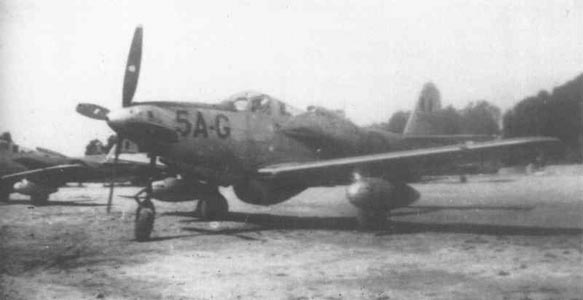 |
P-63C Kingcobra |
Data |
Drawings |
Modèle accueillant de nombreuses améliorations par rapports aux modèles précédents. Il était équipé d'une verrière coulissante en forme de goutte d'eau comme pour le P-51D Mustang, une envergure accrue (11.94 m), et d'un nouveau moteur Allison V-1710-109, développant 1425 cv. Le gain en vitesse maximale était de 50 km/h par rapport au P-63A. Le North American P-51D Mustang étant déjà produit en masse et restait supérieur au Kingcobra, le P-63D resta donc au stade du prototype (ce dernier effectua son premier vol au début 1945).
Model with many
improvements model compared to the to previous models. It was equipped
with a sliding "water teardrop" or "bubble" canopy
as on the P-51D Mustang, increased wingspan (11.94 m), and a new engine
Allison V-1710-109, developing 1425 hp. The gain in top speed was 50 km/h
compared to the to the P-63A. The North American P-51D Mustang was already
in mass production and remained higher than the Kingcobra, the P-63D thus
remained at the prototype stage (the latter made its first flight in early
1945).
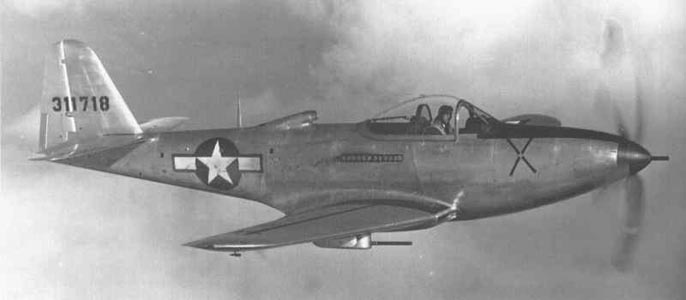 |
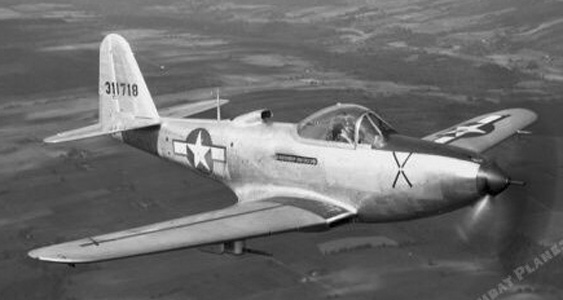 |
Only one P-63D was built with a
bubble canopy. It was the fastest version of the P-63. |
|
src: ?
|
|
Drawings |
Modèle similaire au P-63C mais doté des changements du P-63D excepté la verrière en goutte d'eau. Il était destiné aux alliés des USA mais la fin de la guerre en Europe mis un terme à la production après que seulement 13 avions furent complétés. Quelques-uns furent livrés au Honduras.
Model similar to P-63C but with changes of the P-63D except the water teardrop. It was intended for US allies, but the end of the war in Europe halted production after only 13 aircraft were completed. Some were shipped to Honduras.
Modèle similaire au P-63E mais propulsé par un Allison V-1710-135 développant 1425 cv, et possédant des ailes et une queue légèrement modifiés. La fin de la guerre en Europe mit fin au projet avant la production en série, et seulement deux avions furent complétés. Le P-63E réalisa son premier vol en avril 1945.
Model similar to
P-63E but powered by an Allison V-1710-135 developing 1425 hp, and with
wings and tail slightly modified. The end of the war in Europe ended the
project before mass production, and only two aircraft were completed.
The P-63E realized its first flight in April 1945.
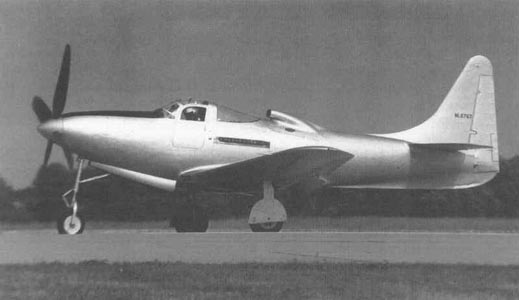 |
P-63F Kingcobra |
Drawings |
100 exemplaires du P-36A-9 furent reconvertis en avion cible piloté, RP-63A Pinball. L'armement fut supprimé et le blindage fut largement augmenté pour assurer la sécurité du pilote. Et oui c'est l'avion lui même et non une cible tractée ques les élèves canonniers visaient. Les projectiles étaient en graphite et éclataient au contact sans causer de domages. L'avion était équipé d'un compteur d'impacts. Beaucoup sont encore utilisés comme avion cible tracté.
- Bell RP-63A-11 Kingcobra: 5 conversions
- Bell RP-63A-12 Kingcobra: le modèle précédent était mal balancé et cela fut corrigé avec ce modèle. 95 exemplaires construits.
100 copies of the P-36A-9 were converted into manned target aircraft, RP-63A Pinball. The armament was removed and the armor was greatly increased to ensure the safety of the pilot And yes it is the aircraft itself and not a towed target the gunner students aimed. The projectiles were in raphite and broke in contact without causing domages. The aircraft was equipped with an impact counter. Many are still used as tug target aircraft towed.
- Bell RP-63A-11 Kingcobra: 5 conversions
- Bell RP-63A-12 Kingcobra: the previous model was poorly balanced and it was corrected with this model. 95 examples built.
Drawings |
En 1948, le Bell RP-63A fut rebaptisé QF-63A / In 1948, Bell RP-63A was redesignated QF-63A.
Neuf Bell P-63As furent modifiés en avion d'entrainement deux places / Nine Bell P-63As were modified in 2-seat training aircraft.
Avion cible piloté, basé sur le Bell P-63C. 200 avions furent convertis:
- Bell RP-63C Kingcobra
- Bell RP-63C-2 Kingcobra: moteur Allison V-1710-117 et blindage de 675 kg
Manned target aircraft, based on the Bell P-63C. 200 aircraft were converted:
- Bell RP-63C Kingcobra
- Bell RP-63C-2 Kingcobra: Allison V-1710-117 engine and 675 kg armor
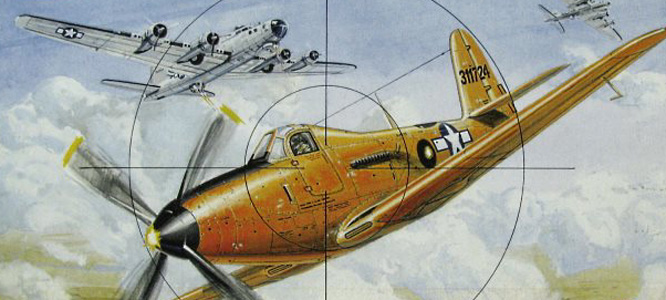 |
RP-63C Kingcobra |
src: Mustangs
Mustangs |
Drawings |
En 1948, le Bell RP-63C fut rebaptisé QF-63C / In 1948, Bell RP-63C was redesignated QF-63C.
Bell P-63C furent modifié en avion d'entrainement deux places avec un deuxième cockpit/ Bell P-63As were modified in 2-seat training aircraft with a second cockpit.
 |
TP-63G |
src: Aerofiles |
Avion cible piloté, développé à partir du RP-63C, avec un blindage plus conséquent (982 kg). 32 avions furent convertis (2 prototypes et 30 modèles de production) sur une commande de 450 exemplaires qui fut annulée.
Manned target aircraft,
developed from the RP-63C, with a more substantial armor (982 kg). 32
aircraft were converted (2 prototypes and 30 production models) on a 450
aircraft order that was cancelled.
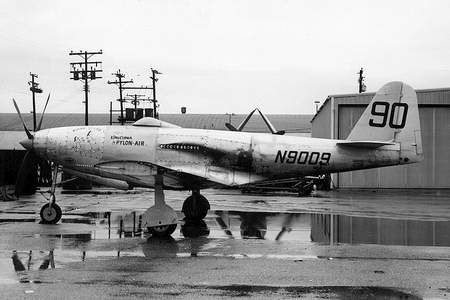 |
RP-63G Kingcobra (?) |
Drawings |
Un RP-63G (serial number 45-57300) fut modifiée avec une queue expérimentale en forme de V à la Beechcraft Bonanza.
A single RP-63G (serial number 45-57300) was fitted with an experimental V-tail assembled at la Beechcraft Bonanza.
 |
 |
Bell RP-63 Kingcobra with V-tail
modification. |
|
src: Olive-Drab |
src: Aerofiles |
En 1948, le Bell RP-63G fut rebaptisé QF-63G / In 1948, Bell RP-63G was redesignated QF-63G.
Bell P-63 transformé par les Russes en avion d'entrainement deux places avec un deuxième cockpit à l'avant pour le stagiaire. Le modèle russe diffère sensiblement au niveau de la verrière du modèle américain.
Bell P-63 transformed by the Russians in training two-seat plane with a second cockpit at the front for the trainee. The Russian model differs significantly from the level of the canopy of the American model.
 |
TSNEB P-63 UTI |
src: mig3.sovietwarplanes |
Deux P-63Cs du surplus de l'armée furent modifiés par Bell à la demande de la Navy pour des essais en vol à vitesse réduite et pour étudier de nouveaux designs d'ailes pour les grandes vitesses. L'appareil fut équipée des nouvelles ailes avec des bords d'attaque réglables, des bords de fuites et une flèche de 35°. Seul le train d'atterrissage du nez était rétractable, ceux des ailes étant statiques. Le L-39-1 vola pour la première fois le 23 avril 1946, démontrant le besoin d'agrandir les gouvernes arrières et d'allonger le fuselage pour mieux équilibrer l'avion en vol (le repositionnement des ailes réduisant l'efficacité de l'empennage et modifiant le centre de gravité). Une hélice légère de P-39Q-10 fut montée et l'empennage fut modifié. Le L-39-2 incorpora ces changements depuis le début. Le L-39-1 fut envoyé au NACA à Langley pour des tests en soufflerie. Le L-39-2 servit aussi comme banc d'essai pour le Bell X-2 pour le design des ailes en flèche à 40°.
Two P-63Cs of army surplus were modified by Bell at the request of the Navy for testing in low speed flight and to study new wing design for high speeds. The aircraft was fitted with new wings with eading edge slats, trailing edge flaps and a pronounced sweep of 35 degrees. Only the nose landing gear was retractable, those wings are static. L-39-1 flew for the first time on 23 April 1946 showing the need to expand the tail and lengthen the fuselage to better balance the aircraft during flight (repositioning wings reducing the effectiveness of the empennage and moved the center of lift aft). A light propeller P-39Q-10 was mounted and empennage was modifid. L-39-2 incorporated these adjustments from the start. L-39-1 was sent to the NACA at Langley for wind tunnel tests. L-39-2 also served as a test bed for the Bell X-2 for the design of swept wings 40 degrees.
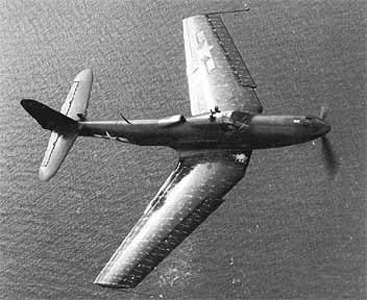 |
 |
L-39 with three -bladed prop |
|
src: warbirds
forum |
src: warbirds
forum |
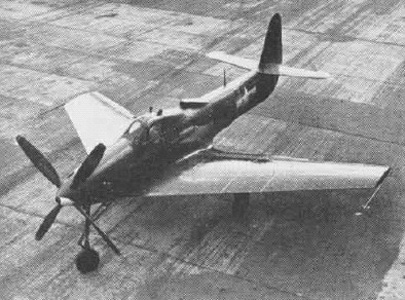 |
L-39-2 with swept wings and four-bladed prop |
src: Wikipédia |
Drawings |
Sources: